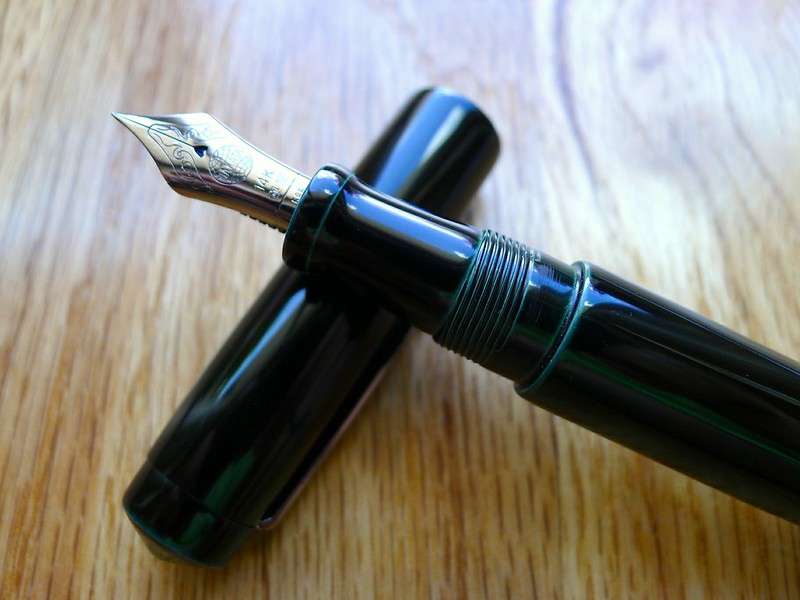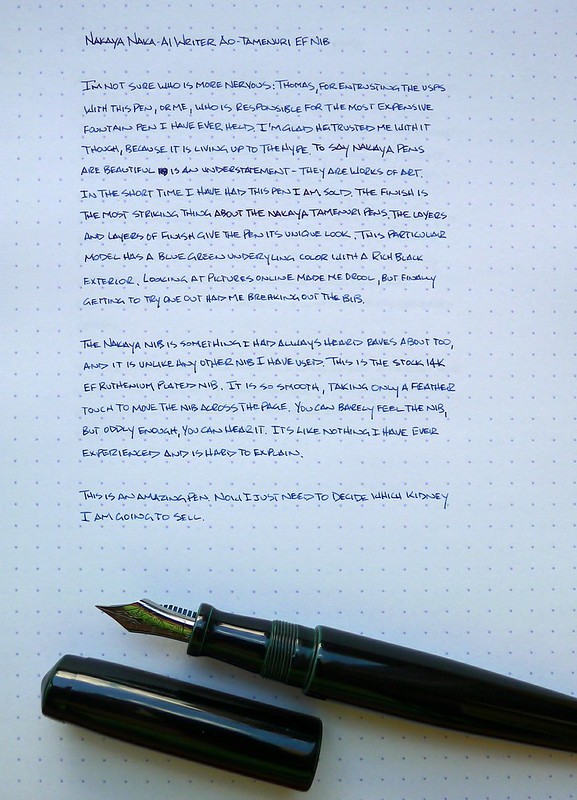WARNING: Do not read this post unless you want your wallet to be emptied.
No post I do about Nakaya is going to do this brand justice. I have been reading and researching these pens for about a year now and still feel like I am a complete novice concerning this historic brand. Luckily, I was able to spend some time with one a few months ago. To say I came away impressed is an understatement.
Before ever getting this Nakaya Naka-Ai Writer Ao-Tamenuri from the venerable Thomas I was in awe of everything Nakaya. The pictures I saw and the reviews I read only solidified the fact that this was my holy grail pen. The designs alone are exactly what speaks to me as a pen owner, not to mention the amazing finishes and world-class nibs.
What makes a Nakaya so special? Each pen is a handcrafted work of art, taking from 3 to 6 months to make depending on the requirements and finish. The barrels begin as hand-turned ebonite and then are finished with many layers of Urushi lacquer to provide a depth in color that is unparalleled. If you have an hour or two to kill (and a drool bib), browse through the Nakaya product catalog. Only then will you begin to understand why these pens are so loved and respected.
The naming conventions may be confusing, but once you are familiar with Nakaya's style they are easy to break down. Let's take this model apart to understand what the name means:
Nakaya - The manufacturer
Naka-Ai - The barrel shape
Writer - With clip
Ao-Tamenuri - The finish, in this case blue-green underneath black
The Ao-Tamenuri is one of the newest finishes available, and is a Nibs.com exclusive (Correction: The Naka-Ai model is the Nibs.com exclusive, not the Ao-Tamenuri finish. Thanks Thomas!). I know Thomas had been waiting a while for this one and I can see why. There is a depth to the finish that is impossible to capture in pictures.
When I finally got the nerve to ink up and use this pen I understood why Nakaya's are so revered. As soon as I picked it up I could feel the warmth in the barrel and the perfect balance. The nib provided a writing experience unlike I had felt before (this one has a stock EF nib). It is dead smooth and only takes a feather-light touch to write a solid line, but you can hear the nib moving across the page as you write. It is very hard to explain, other than it sounded like music to my ears.
So why don't I have one of these pens in my arsenal yet? Well, the model I reviewed runs about $700, with entry-level Nakaya's starting around $550. The price isn't necessarily a deterrent. I could save up for one in a few months if I wanted to. The problem is I know I won't be able to stop at one, and I'm not sure how Mrs. Pen Addict would feel about that.
This small review does not do a pen like this justice. At all. Here are several links where you can read and learn more about Nakaya fountain pens:
-- A Bit About Platinum and Nakaya
-- The most gorgeous red - Nakaya Dorsal Fin
-- The Nakaya Urushi Wajima-nuri -Tamenuri
-- A Snooping around the Nakaya Fountain Pen Company
-- Hands-on with the Nakaya Piccolo Writer Heki-tamenuri Fountain Pen
Be safe out there. And hide your wallets.



















